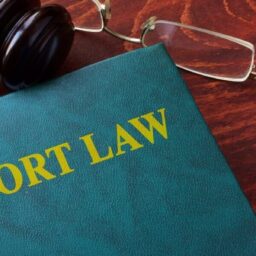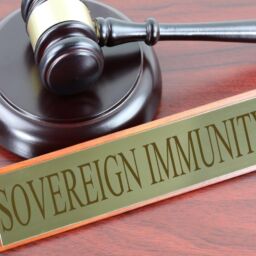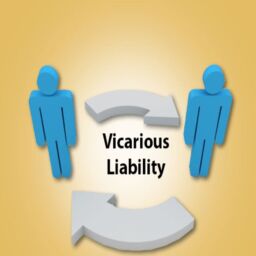INTRODUCTION
Several scholars of law and jurists came up with the study of law forming a basis for the evolution, explanation, understanding and development of concepts. Such theories are based upon deeper studies and views vary from one person to another. Under tort law, foundations of tortuous liabilities were laid and there was dissension in views between the law of tort and law of torts. The question has been studied by various jurists and two theories have always been in discussion. Law of tort and law of torts, the difference lays in the concepts. The former has a broader scope where all the wrongful acts backed by legal justification can be brought into action, whereas the other one has a limited scope which restricts the actions to be brought under certain specified torts to seek remedy.
LAW OF TORT
The theory was first put forward by Sir Fredrick Pollock in 1887. The theory was then supported and developed by Prof. Percy Henry Winfield.[1] According to him, “Law of Tort is a general liability which originates from the violation of duty determined by law.” This gives a wider approach to the theory of tort. According to this, all the wrongful acts that cause some kind of legal injury come under the law of tort. There must not be a pre-existing specified tort for a wrong to come under it. All the wrongful actions backed by legal justification fall under the scope of this theory and have room to seek remedy. A limited number of torts would not help in the society that is evolving every day. Professor Winfield was of the view that law of tort is an evolving concept, and a new tort may be identified and added to the theory. The theory has spaces for the newer torts to emerge. There is no limitation, and the new torts can be incorporated into the theory. As the extent of injuries is wide, the scope for remedy is also wider. This theory is also known as wider based theory or growing theory. The reason for the same is that it has a wider scope in the creation of new torts.
CASE LAWS
There are certain cases under which newer torts have been created.
- The tort of deceit under Pasley vs Freeman[2]: Pasley, the plaintiff, a merchant asked the defendant for a credit reference on Falch before selling him goods. The defendant was lying about the reference of Falch’s credit and goods were shipped to Falch who never paid for them. The plaintiff then sued the defendant for fraud and misrepresentation. The action was maintainable on the grounds of deceit in Defendant and injury and loss to Plaintiff.
- The landmark decision of Rylands v. Fletcher[3]establishes the principle of strict liability.
- The tort of inducement of breach of contract was developed in the case of [4]Lumley v. Gye, 1853.
- C. Mehta v. The Union of India[5] was a remarkable case in Indian legal history that established the principle of Absolute liability.
- In Ashby v. White[6], the principle of Ubi jus ibi remedium was recognised for the first time.
IN FAVOUR
The coverage of Winfield’s theory of tort is wider. A wider interpretation of the theory was made by the legal scholars as this had scope for establishing new principles of torts. The Indian judiciary supported Winfield’s theory while the judgement of M.C. Mehta was delivered by Justice P.N. Bhagwati. Holt C.J., favoured the theory while giving recognition to the maxim ubi jus ibi remedium in Ashby v. White.
AGAINST
There are variations in the law of tort on case to case basis. There is a scope of misuse of this liberty given by the theory which allows newer torts to emerge just based on a legal justification. There is not much uniformity because of the evolving jurisprudence since there are no specified wrongs. Thus, though not much criticized, these are some of the drawbacks of Winfield’s theory of law of tort.
LAW OF TORTS
Sir John William Salmond, on the other hand, proposed another theory with a narrower scope called the law of torts. According to the theory, the wrongful act must occur from a specific tort that is already been established under the law of torts. This has a much narrow coverage and is codified in nature. The theory of the law of torts is widely known as the Pigeon-Hole Theory. Unlike the wide-scope theory, in this, there is no general principle of liability and the onus to prove the wrong is always upon the plaintiff to establish the wrongful act caused fits in one of the pigeon holes, i.e. some or the other specified tort. He noted that the remedy would be available only for those torts that fall well under the category of the certain specified torts and not for some other torts that may cause some legal injury but does not fit in the pigeon hole. Thus, Salmond was one of the scholars who were against the concept of generalization of torts.
CASE LAWS
- Donoghue v. Stevenson[7], in this case, a snail was found in the ginger beer opaque bottle. The plaintiff complaint against both the manufacturer and the seller of ginger beer. The injury was caused to the plaintiff, as it was unforeseeable from naked eyes inside the bottle. So, the manufacturer was held liable for the tort of negligence.
This gives rise to a new principle apart from the duty of care. Sir John Salmond was against such new evolutions of newer concepts. According to Salmond, a neat set of pigeon-hole, each containing a specific labelled tort, just as criminal law consists of a body of rules establishing specific offences, so the law of torts consists of a body of rules establishing specific injuries.
IN FAVOUR
The supporters believe that this does not restrict the power of courts in dealing with matters but forms the basis for the cases that come up. No new case can emerge unless it fits in the pigeon hole. Complete restriction is not the motive, but unless a wrongful act can fit as a tort that is already specified, there is no need for the new ones to emerge.
AGAINST
The limited scope of this theory of tortuous liability is high as it gives no remedy or the injuries that cause legal damage but does not fall under the category of specified wrong. Wrongs cannot be held wrongs just because they do not fall under any of the narrow boxes of the pigeon hole.
CONCLUSION
There are two widely accepted theories of tortuous liability, one given by Prof. Winfield i.e., a wide-based theory and the other by Sir John Salmon which is popularly known as the Pigeon-hole theory. Both of them have their pros and cons. One has a broader concept while the other is a narrower one. Winfield’s theory opens a room for newer injuries and their remedies whereas, Salmond’s theory restricts newer torts and demands wrongful acts to fit in the pigeon-holes i.e., the specified torts that already exist. This theory says that the plaintiff can claim damages only for those actions that are already labelled. The Indian courts have evolved with the wider based Winfield’s theory in landmark judgement such as M.C. Mehta v. The Union of India. Thus, this is a broader theory. The law of tort and law of torts both have an equal and important role in defining tortuous liability and are a part of the developing area of law.
Author(s) Name: Aastha Mahesh Saboo (Himachal Pradesh National Law University, Shimla)
References:
[1] DR. R.K. Bangia, LAW OF TORTS (22nd ed. 2008) pg 13-16
[2] Pasley v. Freeman, (1789) 3 TR 51
[3] Rylands v. Fletcher (1866) LR 1 Exch 265, (1868) LR 3 HL 330
[4] Lumley v. Gye [1853] EWHC QB J73
[5] M.C. Mehta v. Union of India 1987 SCR (1) 819; AIR 1987 965
[6] Ashby v. White (1703) 92 ER 126, (1703) 2 Ld Raym 938, (1703) 1 Sm LC (13th Edn) 253
[7]Donoghue v. Stevenson [1932] A.C. 562 (26 May 1932)










